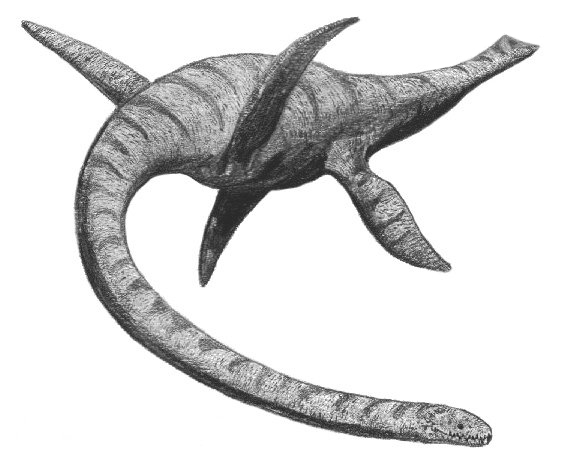|
|
Library news21.06.2024
Section Getting to Know Russia
Fossilized remains of dinosaurs found by him in in Permian continental sediment have formed Northern Dvina gallery of the Orlov Paleontological Museum (Moscow). They occupy the largest podium of Hall 4 “The Late Paleozoic - Early Mesozoic, the earliest vertebrates”.
You can see a pangolin on the coat of arms of the Kotlas District (the authors are Alexander Bryukhanov and Yurii Chirkov). It was established in December 2009 by the decision of the District Council of Deputies and is dedicated to the unique discoveries made by the distinguished Russian paleontologist Vladimir Amalitskii on the banks of the Northern Dvina in the beginning of the XX century.
Also in 2018, in the Yarensky shale-bearing basin, the head of the lithography laboratory of the Institute of Geology of the KSC Ural Branch of the Russian Academy of Sciences, Viktor Saldin, and a resident of Syktyvkar, Konstantin Romanov, discovered the remains of bones and vertebrae. It was revealed later that the most part of the bones belong to plesiosaurus and the least one – to ichthyosaurus (a group of extinct marine reptiles that had a shape similar to fish and dolphins).  Новости 1 - 20 из 69 Начало | Пред. | 1 2 3 4 | След. | Конец |

 In 1898 during an expedition, in the nodules of sand lens “Sokolki” on the Small Northern Dvina Vladimir Prokhorovich Amalitskii found many excellent traces of Glossopteris leaves and a jaw of an animal-like reptile with well-preserved teeth. The animal turned out to be a big herbivore reptile – a pareiasaurus; its remains were found in South Africa. It was a victory - necessary funds were allocated for further excavations.
In 1898 during an expedition, in the nodules of sand lens “Sokolki” on the Small Northern Dvina Vladimir Prokhorovich Amalitskii found many excellent traces of Glossopteris leaves and a jaw of an animal-like reptile with well-preserved teeth. The animal turned out to be a big herbivore reptile – a pareiasaurus; its remains were found in South Africa. It was a victory - necessary funds were allocated for further excavations. The works at this promising site began in 1899. At first, the excavations did not bring any results, but another attempt at a different spot was a success. The first discovery was a complete scull of a pareiasaurus, and then the scientist ran across a bunch of complete sculls of carnivore reptiles, such as gorgonopsias and already known pareiasauruses. Apart from that, there were several dozens of unknown pangolins. As a discoverer, Amalitskii named them inostrancevia, scutosaurus, dvinosauria, dvinia and kotlassia. Total weight of all the discoveries made during 3 years was more than 64 tons.
The works at this promising site began in 1899. At first, the excavations did not bring any results, but another attempt at a different spot was a success. The first discovery was a complete scull of a pareiasaurus, and then the scientist ran across a bunch of complete sculls of carnivore reptiles, such as gorgonopsias and already known pareiasauruses. Apart from that, there were several dozens of unknown pangolins. As a discoverer, Amalitskii named them inostrancevia, scutosaurus, dvinosauria, dvinia and kotlassia. Total weight of all the discoveries made during 3 years was more than 64 tons.